Souls games are very much an acquired taste, one that I would have never sought to try if I hadn’t been pushed by several of my close friends to try Bloodborne. Since then I’ve tried my hand at the numerous Souls-like experiences that have came out and for the most part I’ve enjoyed them. However none of them were the kind of game I’d recommend to people wanting to get into the Souls-like genre, all of them maintaining the same brutality that made recommending them to friends (especially those who’d shied away from things like MMORPGs for similar reasons) a fools errand. Remnant: From the Ashes though maintains a lot of core Souls traits whilst making it very approachable, especially when you’re teamed up with another friend or two. To be sure it’s still not going to be to everyone’s liking but I was honestly surprised at just how much fund I had in this not quite bargain basement souls clone.
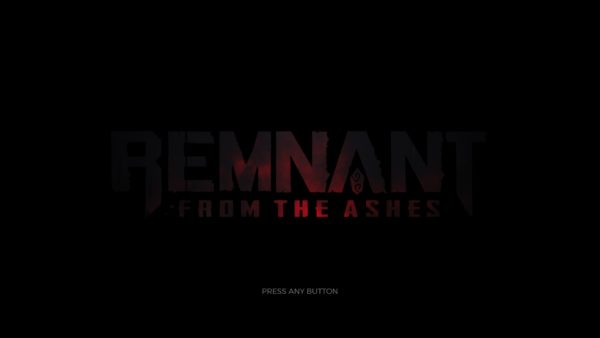
The world has been overtaken by an alien presence known only as the root. For over 100 years its tendrils have spread out everywhere, wiping out most of life as we know it. The last few remnants of humanity have holed themselves up in wards, large fortified structures that have managed to keep the root out, giving the survivors a life that few would envy. You are a champion from outside those wards, risen with a single purpose: to defeat the root and restore the world to the glory that it once held.
Seemingly taking inspiration directly from the Souls-game for everything Remnant’s graphics aren’t exactly cutting edge, even though they come to us via the Unreal 4 engine. Part of this is due to the rather large and expansive procedurally generated areas that you’ll be trudging through, something which can be rather hard to optimise well. To be sure there is some great level and set design, like the screenshot below highlights, but for the most part it certainly feels like you’re playing a previous generation game. Performance for the most part is good, the only issue I encountered was in some of the earlier levels that generated some rather long sections which my nearly 5 year old rig struggled a bit with. Overall I’d rate the graphics as good but not great.
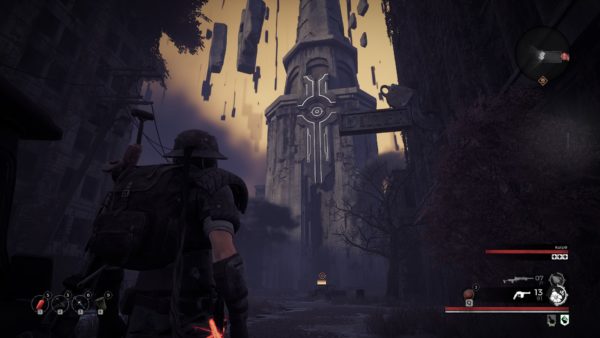
Remnant incorporates many of the usual tropes you’ll see in a Souls-like game including the punishing combat and a wildly opaque progression system with dozens of weapons, armour sets and skills to optimise. Remnant’s claim to fame is that co-op is an expected part of the experience right from the start, rather than being something you do if you need help with a boss or a particular section. The world is also mostly procedurally generated, even to the point of some parts of it not being accessible if you don’t get the right “roll”. Thankfully this is accompanied by the oh-so-welcome map which would have otherwise made the procedurally generated world an absolute nightmare to navigate. It’s certainly different enough from your garden variety Souls-like game that it stands on its own, so much so that it seems to be attracting quite a few players who wouldn’t typically give a game like this a second look.
At a basic level Remnant’s combat follows the Souls-like trope of having punishing combat that feels quite rewarding when you feel like you’ve mastered it. However instead of it being primarily melee focused with some ranged backup Remnant is completely the opposite, with most of the combat taking place at range. To be sure you can still build yourself up to be a melee powerhouse but anyone who’s played Souls games knows that if you can defeat an enemy without getting close to them it’s going to be far easier than if you try the same thing up close. This is, I feel, the reason why Remnant feels quite a bit easier than its other Souls-like compatriots as the amount of leeway you have when dealing with enemies at range compared to when you’re in melee is quite substantial. Of course the game is designed around this so many of the enemies have ways of quickly closing the gap on you but that matters a lot less when they’re just about to fall over when they do.
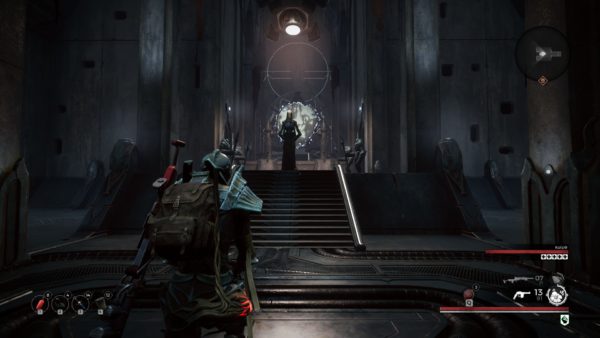
The weapon mods also provide for some rather game breaking mechanics that allow you to get away with things that trivialise many of the game’s harder encounters. One of the ones you get early on, the one that summons a tree that taunts all enemies in a radius, just so happens to work on bosses as well. This becomes incredibly valuable as launching one of those can easily net you a quarter of a boss’ health as they slap away at a random tree whilst you unload round after round into them. With 2 players the uptime is considerable but with 3 it can be nigh on permanent. Of course these things that make the game easier for souls veterans like myself are going to be the things that help new players immensely so I definitely don’t think they should be removed, and of course I could just not use them, but hey I’m not made of stone. Sometimes I do want a little fun with my challenge!
As I alluded to earlier the complex and quite often intentionally vague progression system that all Souls-like games are known for makes an appearance in Remnant. Whilst the basics are easy enough to grasp, like different armours being strong/weak against certain damage types, there’s so many different things to optimise that it can be quite a struggle to figure out how to best min/max your character. Traits, for instance, start off with simple augments that make sense but once you have 30+ of them it can be a real chore to think about whether or not having extra stamina is better than reducing stamina costs or whether you’re hitting diminishing returns with reload speed. I’m sure there’s calculators and guides galore out there, like there is always is for games like this, but it does feel like it’s more of a chore than it should be.
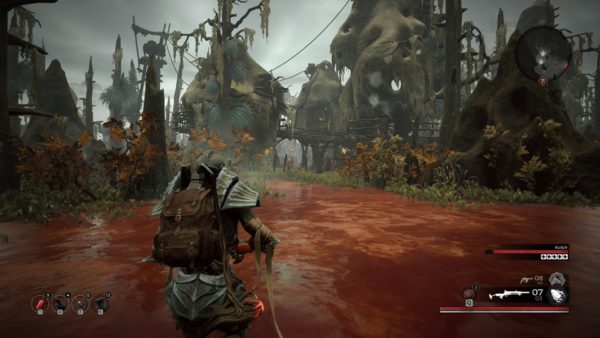
The progression system is auto-scaling meaning that all you need to do to unlock the next tier of upgrade materials is to upgrade an item all the way to the point of needing them. The old materials will still continue to drop which is a good thing since you’ll need them to upgrade any armour or weapons that you happen across or manage to craft. At the start you’ll be scrounging for every little bit but later on, as you move up the materials treadmill, you’ll find yourself quite flush with the older materials making any new pickup that you want to use viable. That being said I used the starter shotgun for most of the game and didn’t really struggle at all.
The boss fights are all pretty much standard DPS fights with a few interesting mechanics thrown in here and there. Unlike other Souls games where learning the move set is absolutely critical to beating the boss Remnant is usually pretty predictable, so much so that my friend and I one-shotted multiple bosses over the course of our play through. The only one that gave us significant grief was the final boss and that’s mostly because it’s the only one we did that had mechanical complexity on par with standard Souls bosses. Interesting fact too: nearly all the bosses have 2 ways of defeating them and doing the alternate kill will net you different loot. Some of them are pretty obvious whilst others are downright insane. That being said it’d be worth looking into what the alternate kill nets you as sometimes it’s really not worth the effort.
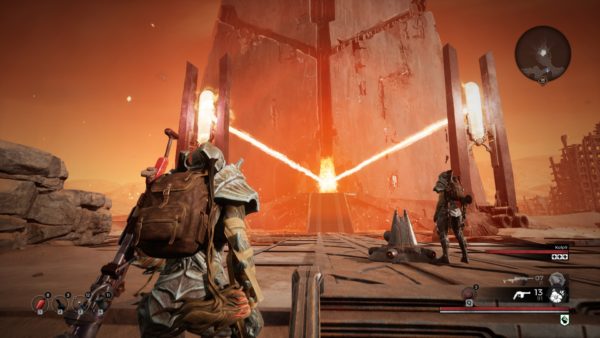
When I saw that Perfect World was the publisher for Remnant I jokingly told my mates that’d be full of jank and, unsurprisingly it is. Some of the more fun bugs we encountered along the way included me getting stuck right inside the door of a boss fight, meaning I couldn’t move from there and we had to just hope that the boss didn’t try and melee me. Bullets would simply not register on certain enemies sometimes, indicating that their hitbox wasn’t placed where you’d typically expect it to be. We had one boss bug out on us so bad that he just teleported around the room randomly, never stopping to attack us and would immediately teleport away again if we ever got close. The procedural generation also doesn’t have a ton of smarts built into it and you’ll often come across identical areas multiple times over in a single level. These are all fixable issues but it’s something to be aware of going in.
The story is nothing to write home about, being your generic hero’s adventure with you as the saviour of all humanity. Whilst it’s a lot more direct than other Souls games tend to be quite a lot of the lore is locked up in journals and other walls of texts scattered around the place, something that’s not exactly conducive to immersive and enjoyable storytelling. It probably doesn’t help that most of the characters are pretty one dimensional, usually vomiting exposition for a good 5 minutes when you first meet them then only giving you a sentence or two when you meet them after that. Its rare that you play these kinds of games for the story though so it’s unlikely to detract from your experience with Remnant.
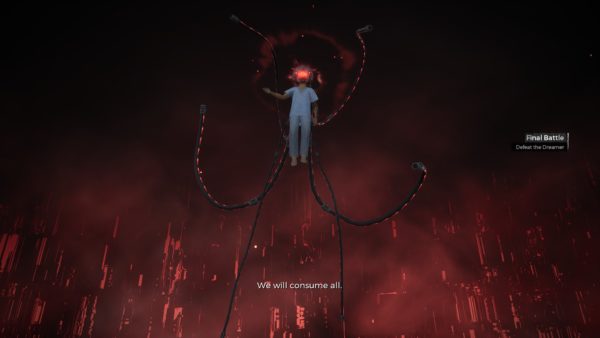
Remnant: From the Ashes was a nice surprise, bringing with it a few new ideas to the Souls-like genre and, I feel, making it approachable to a much wider audience. The graphics might not be the greatest and sure there’s a load of jank to be found but the overall experience, especially when playing with a friend or two, is actually pretty great. It’s certainly a sum of the parts is greater than the whole kind of deal as individually the game borders on being a very B grade experience but combined they manage to stumble into A- territory. So if you’re looking for a lark with a couple mates or have been eyeing off the Souls genre for some time then Remnant: From the Ashes could well be for you.
Rating: 8.25/10
Remnant: From the Ashes is available on PC, PlayStation 4 and Xbox One right now for $56.95. Game was played on the PC with a total of 11 hours playtime and 55% of the achievements unlocked.



